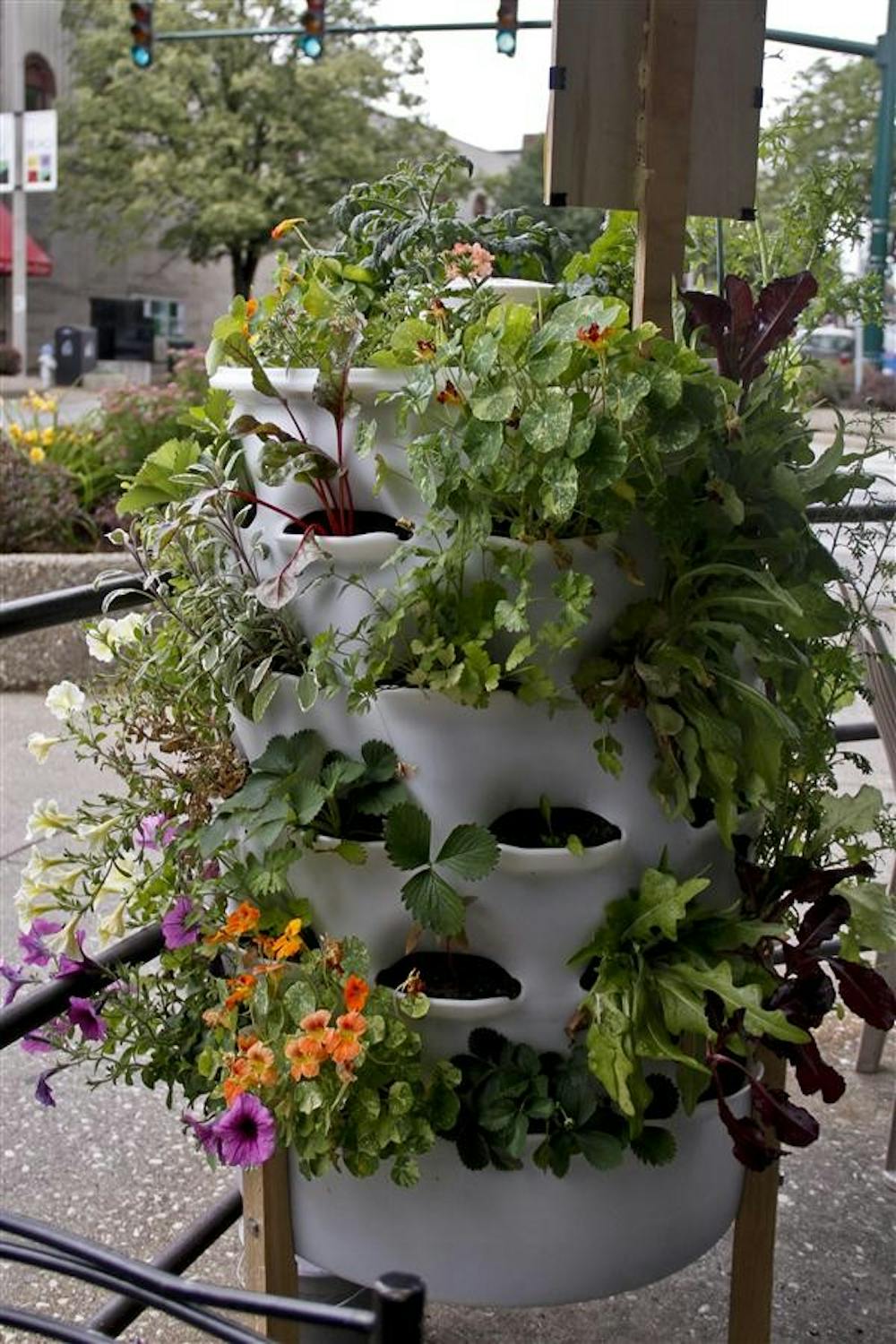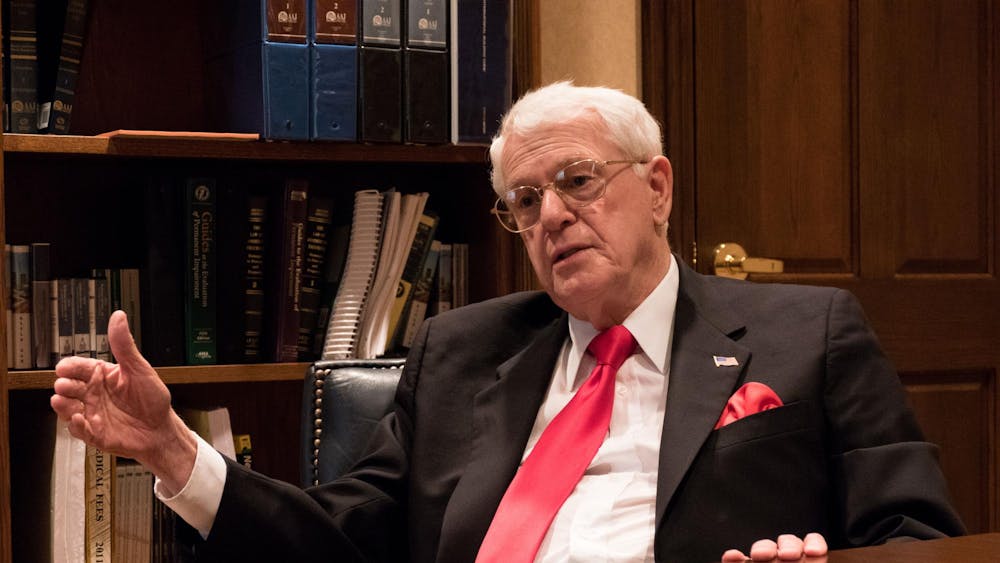Bloomington resident Colin Cudmore once knew nothing about gardening.
But following a public lecture, discovering the usefulness of worms through YouTube and several test trials, he has invented the Garden Tower.
After two years of developing the tower, the product and the company are up and running. Cudmore set up the company six weeks ago with partners Ramsay Harik and Joel Grant.
The Garden Tower is moving into design phase two, which will allow the Garden Towers to be mass-produced.
Cudmore currently makes every tower by hand, which takes about four hours.
It all started with the lecture Cudmore attended at Indiana University about
urban gardening and bringing organic gardens to cities.
“I decided, ‘I’m a creative guy. I should focus my attention in that area,’” Cudmore said.
He knew he needed to design a product that would work in small spaces for apartment owners and city residents — something anyone could use, something vertical rather than horizontal and something fairly small.
But one thing stood in the way: being brand new to having a green thumb.
Cudmore estimates he watched between 100 and 200 YouTube videos to get ideas about how best to design a structure made for urban gardening.
His inspiration for the worm compost tube — a fertilizer source that makes the garden tower different from other products on the market — came from a YouTube video.
“I saw a guy that lives in Alaska, and I think he has, like, 11 world records for growing extremely large vegetables,” Cudmore said.
The man used worm tea, made of water and worm excretions emitted after worms eat compost, to make his vegetables so large.
“I thought, ‘My god, if I could create worm tea in my product, then it would
create its own fertilizer,’” Cudmore said. “But of course I didn’t know how it worked, so I had to watch 30 to 40 videos on vermiculture.”
Cudmore approached Grant and Harik to help him get his product to market. Grant and Cudmore have been close friends since Cudmore moved to Bloomington about three years ago.
“It was kind of a no-brainer,” Cudmore said of working with Grant. “He’s helped me almost since the beginning with testing and design suggestions. Through the process of him helping me test it, I realized that we worked well together.”
Cudmore met Harik while the two were volunteering in the Bloomington Community Orchard. Cudmore shared his idea with Harik, a master gardener with about 25 years
of experience.
“I got so excited about it and saw so much potential in it,” Harik said.
He decided to “drop everything,” and focus on the Garden Tower.
Harik is a teacher but took a year off to focus on other projects.
It was during his year off that he found Cudmore and the garden project. The break has turned into an indefinite future with plans to eventually return to teaching.
“I’m focused on this for certainly as long as it takes to get it up and running,” Harik said. “With all the interest in urban gardening going on right now, this could really take off and become a huge force in community gardens.”
Harik focuses on communications for the project and maintains the towers on display around Bloomington.
Grant works on the technical end of the company, helping to maintain the website and run an online fundraising campaign.
Gardentowerproject.com lists 31 vegetables and fruits, as well as an abundance of herbs and flowers that can be grown in the tower. Larger vegetables, such as zucchini and squash, can grow in bottom rows, with heavy produce spilling onto the ground.
“The only things that don’t make sense are things like potatoes, things that take up lots of space in the soil,” Cudmore said.
The towers, tested by local master gardeners, are on display at Bloomingfoods’ east and west locations, Hilltop Garden and Nature Center, Willie Streeter Community Gardens and the Jordan Hall Greenhouse at IU.
Both Harik and Cudmore emphasized their goal to not only sell garden towers but also develop a philanthropy arm of the business.
Part of the advantage to developing a second-generation tower model that can be mass-produced is that the company can make more revenue, thus being able to give donate more towers.
“I think the three of us share this vision of getting this tower into as many hands as possible,” Harik said. “Both people who can afford it and people who can benefit from it, but also people who really suffer from food insecurity and would benefit tremendously from this great addition to their diet.”
Cudmore said he hopes to reach poorer and urban populations who can’t access or afford fresh, organic food.
“People in cities, especially lower-income people, often don’t have access to organic vegetables because they don’t have stores in those neighborhoods,” Cudmore said. “We may be able to go to Bloomingfoods. But if you live in south Chicago, you may have to take a bus nine miles to get fresh, organic food.”
Growing a green thumb: local inventor seeks to improve fresh food access through new product

Get stories like this in your inbox
Subscribe





